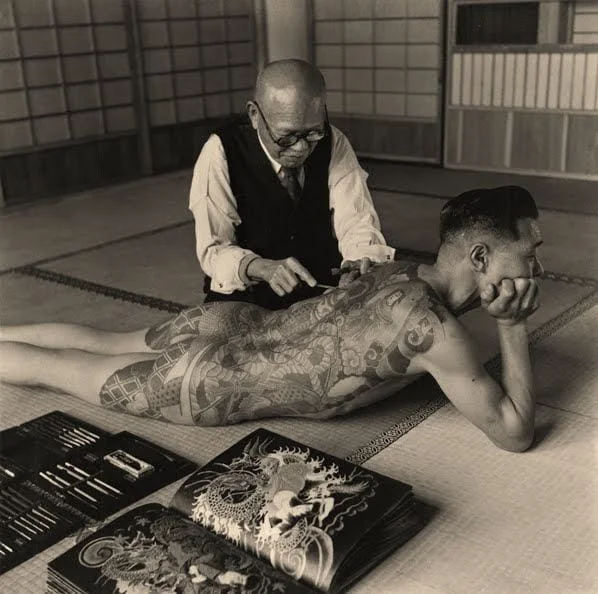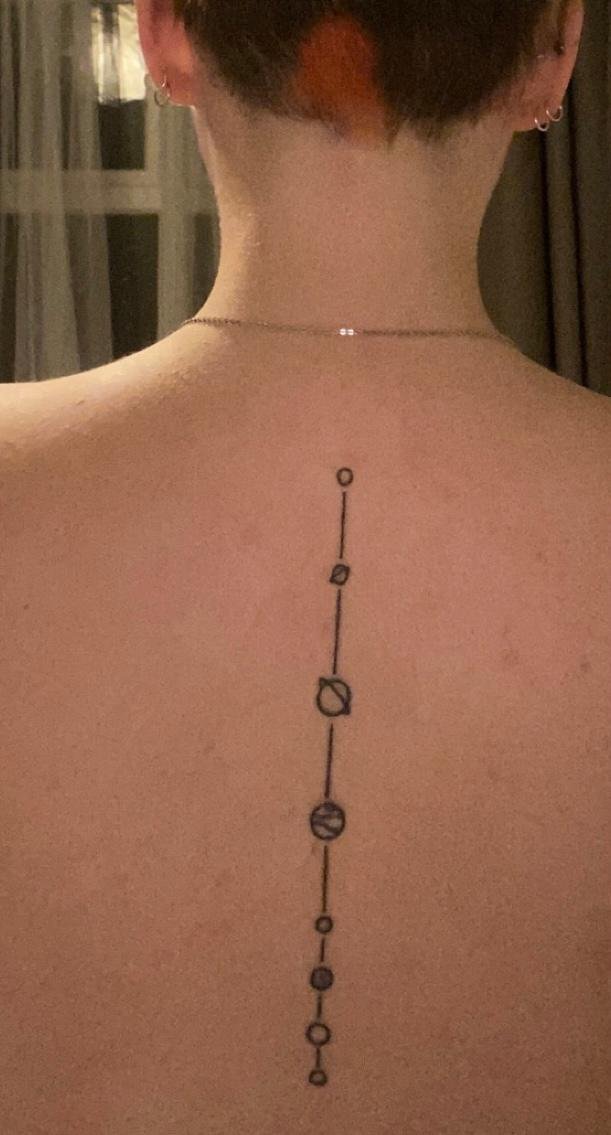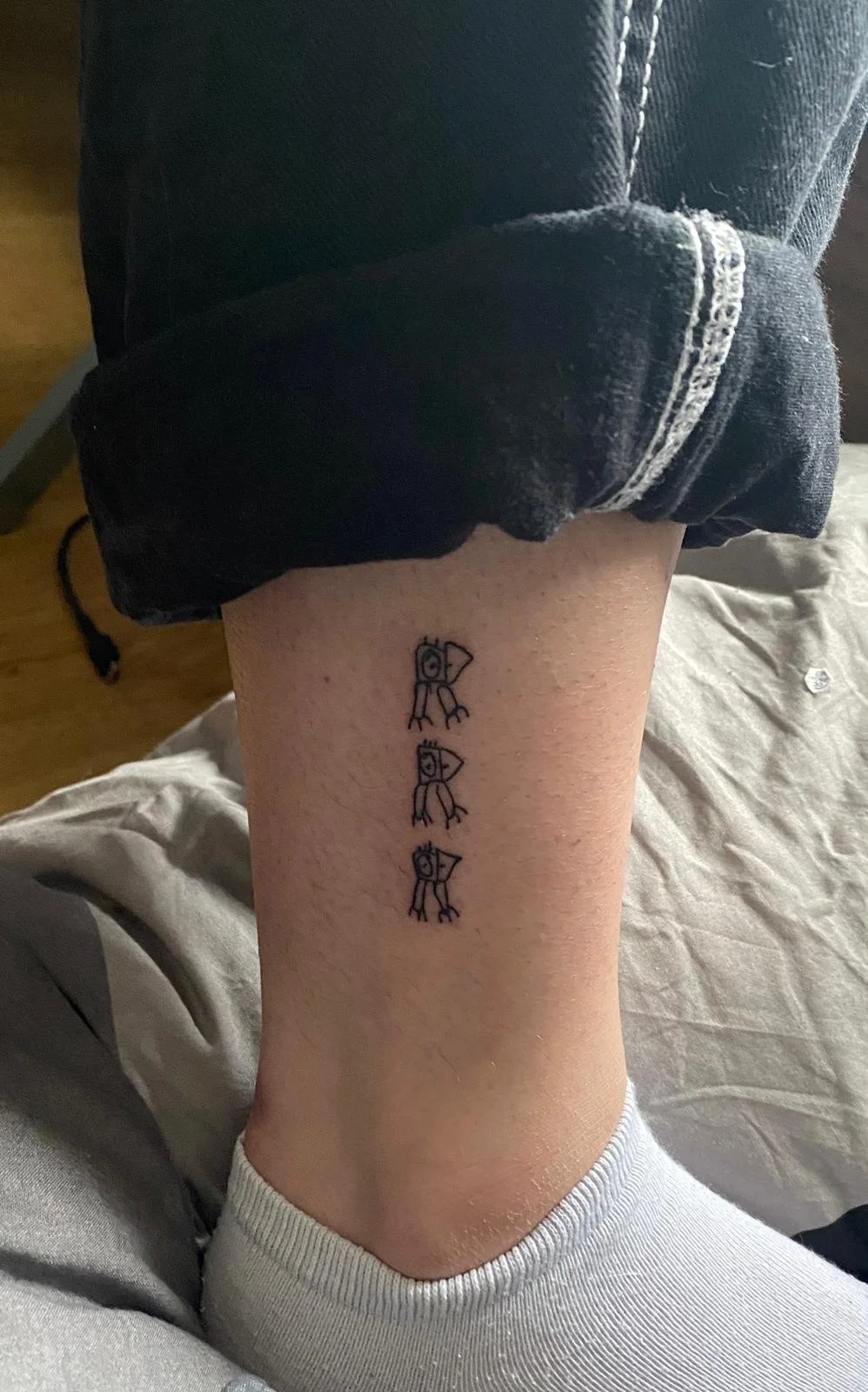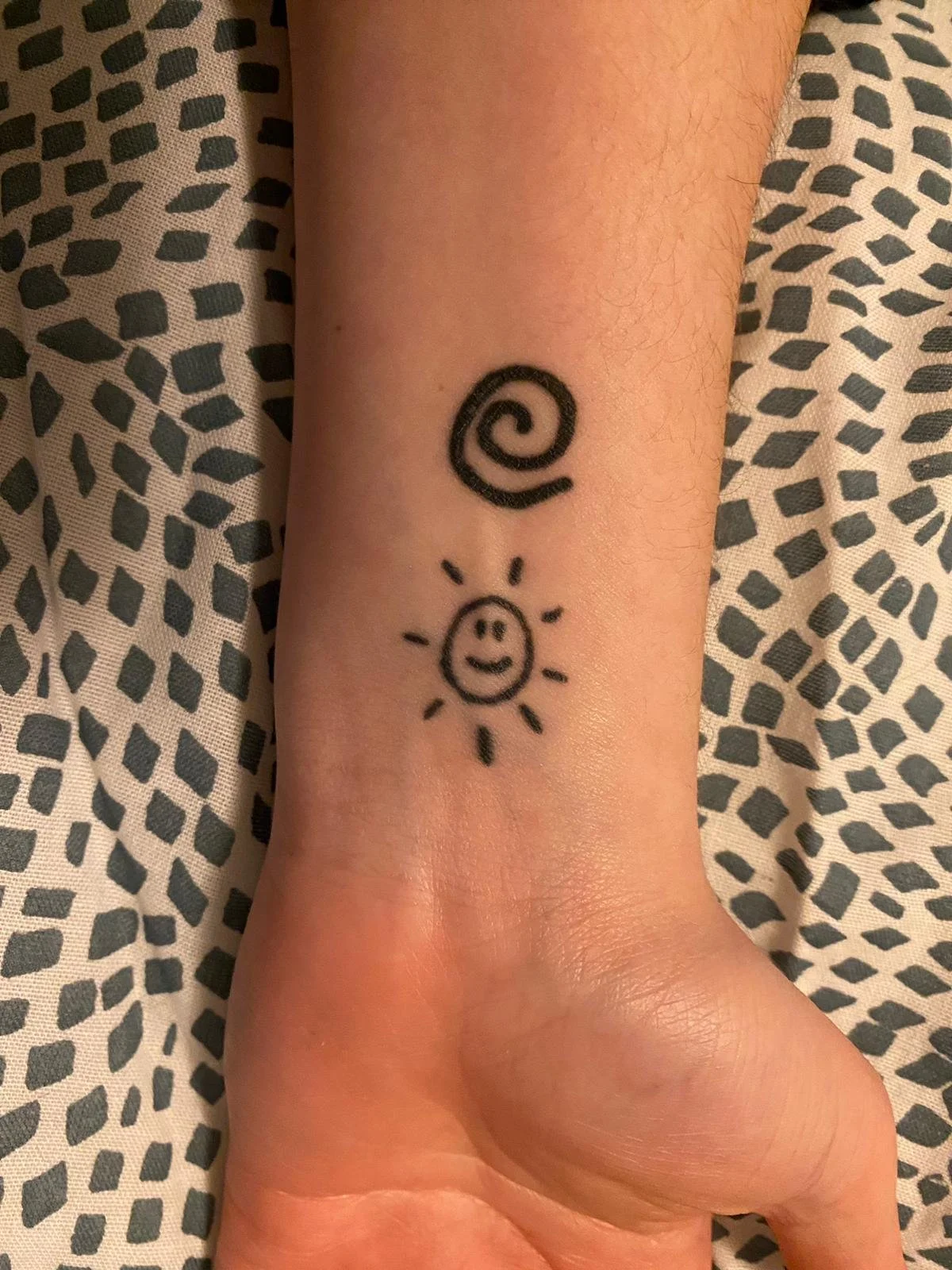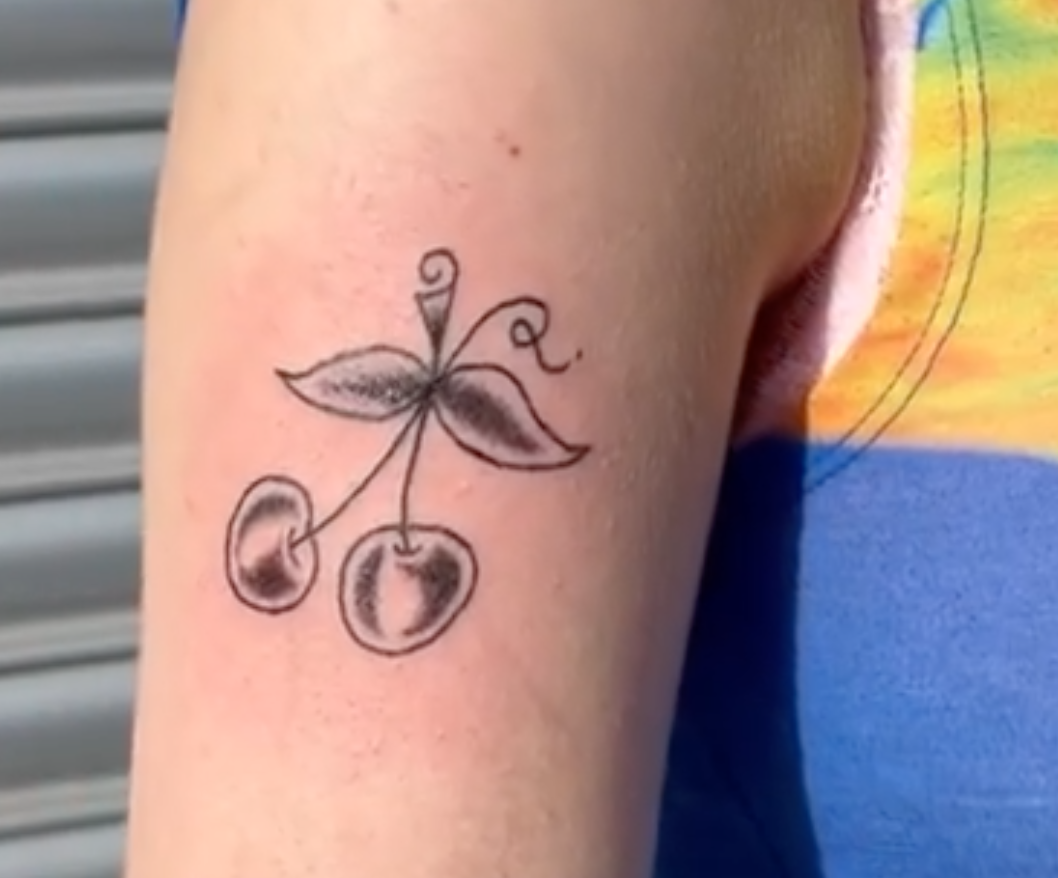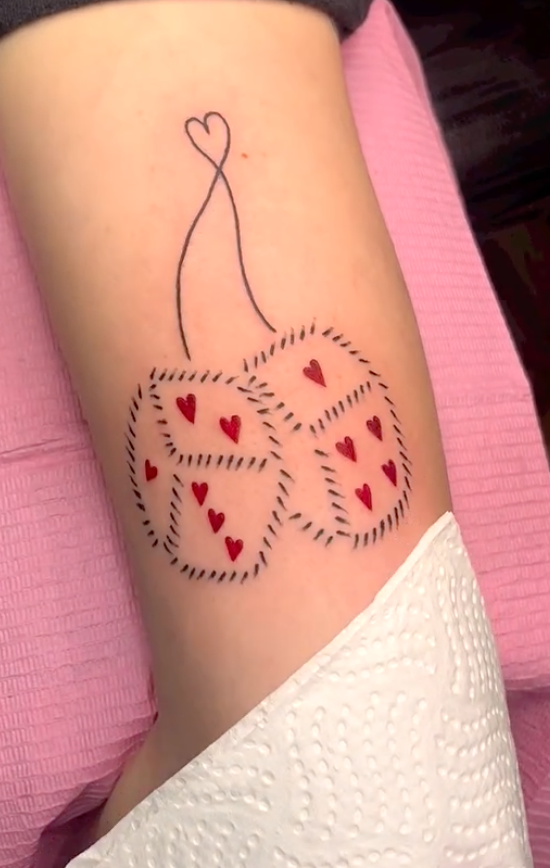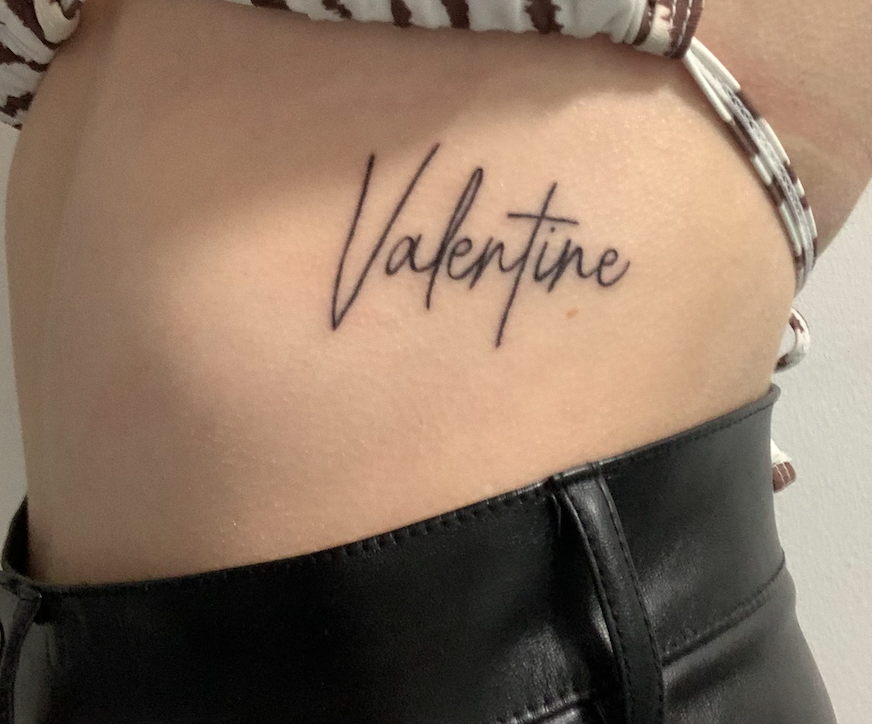THE ART OF TATTOOS: CULTURE AND THE LGBTQ+ COMMUNITY
BY LARA MILLER
CW: Brief mention of transphobia and homophobia.
The art of tattooing has been an act of cultural pride since it first began, it can be dated back to Egyptian mummies, they are vital in Māori traditions and overall are staples in global cultural expression: Irezumi full body tattooing; Tebori hand poked tattoos; Southern Indian Pachai kuthu tribal tattoos; the list goes on. Throughout history, they have been used as symbols of protection, identity, and strength and regularly represent connections with community and belief.
Image by © Horace Bristol: An image taken in Japan, 1946 of Yakuza Member receiving a Tebori tattoo on his upper back.
In the modern Western world, tattoos have become largely synonymous with masculinity, I’m sure everybody has witnessed the ‘pocket watch, lion, rose and forest’ sleeve at some point. Individuals with tattoos have often been publicly deemed undesirable or unemployable, but I ask: how could someone expressing themselves so openly and creatively ever be seen in a negative light? Within the LGBTQ+ community, pride and self-expression is interwoven within the very nature of queer identities. According to a 2013 Harris Poll, one in eight LGBTQ+ Americans had a tattoo, with nearly half of all queer people at least considering getting permanent artwork on their bodies. As a queer tattooed woman myself, I want to challenge this incorrect and offensive notion that tattoos are reserved for the straight and cisgender white man, and I believe the LGBTQ+ community are aiding in the fight against these stereotypes that global cultures have been fighting for centuries.
As I write this, the LGBTQ+ community faces, once again, the threat of legislation and regulation prohibiting their freedoms. The USA is currently attacking en masse the rights of queer drag performers and those within the transgender community, while the Scottish government recently campaigned to reform the Gender Recognition Act. In a society where governments aim to control the LGBTQ+ communities’ autonomy, what better way to rebel than to mark ourselves visibly and proudly with representations of our identities? Tattoos, at their core, are a symbol of expression, a way to make yourself externally look how you internally feel. They’ve been known to help feelings of gender and body dysmorphia, turning a body that may not represent your identity into unique artwork. They also act as armour, open defiance of external parties trying to control the very flesh people so creatively decorate. Even being a queer tattoo artist in a male-dominated industry is an act of defiance, where tattooing is a personal process, those within the community are less likely to feel intimidated being so vulnerable with someone who can connect with their expression.
See above, Becca Hamman’s multiple tattoos, artwork designed by their sibling, themselves and close LGBTQ+ friend Charlie. They describe the tattoos as ‘aesthetically pleasing but still have my identity tied to them,’ and while discussing the meanings, they shared stories of travelling, mental health, passions and devoted friendships.
For those that do not identify as heterosexual or cisgender, tattoos can be a form of signalling to others within the community of a shared identity. In 2022, reported hate crimes against those in the LGBTQ+ community rose by over 40% in comparison to past years, queer tattoos can act as a form of expression that does not attract danger and discrimination. They can work in the same way that the handkerchief code did, being used by predominantly gay men in the 70s and 80s, or how cuffing your jeans became a signal of bisexuality on TikTok in recent years. Tattoos can act as a kind of high-pitched whistle that only other queer people can hear - whether it be a hand-drawn outline of a woman’s body, or a pink triangle paying homage to ACT UP activists. Personally, I have a pair of cherries tattooed on my upper arm, to many, an aesthetically pleasing tattoo, perhaps a homage to the Harry Styles song - but to those who know me within the queer community, they act as a symbol for my sexuality and well… cherries.
My tattoos - Cherries and Dice drawn and tattooed by Phoebe, Tarot Card and ‘Valentine’ drawn and tattooed by Malgorzata. The cherries are discussed above, and the Dice were definitely impulsive but I loved the artwork and they just felt… me. The Tarot Card is for my spirituality and connection to the feminine while Valentine is a song title, a song I adore.
Tattoos have become a way to signify a person’s commitment to self-actualisation, committing to share artistically precisely who you are, to communicate anything from your favourite album to the strength you possess overcoming difficulties with mental health. An individual gets to decide exactly how they look and in doing so, reclaim their power over their own body, narrative and agency. They are a way to break down the heteronormative lens that ‘ideal appearances’ are typically seen through: unblemished skin, clean and palatable, stereotypically attractive to the opposite sex - the list of unrealistic beauty standards seemingly never ends. Through the art of tattooing, you can defy how an oppressive society wants you to look, and take the opportunity to be authentically and unapologetically yourself. Tattoos are a physical symbol of the relationship between the body and identity. Even if the permanent nature of ink is not for you, the LGBTQ+ community have been rebelling against expectations for years, through piercings and hair cuts, style choices and pinky rings, personal aesthetics are a way to push your identity through to the world, in a creative and expressive way.
Artwork by queer artist, Keith Harring, tattooed on Bella Kate, by Gloria Valraven. When speaking about this tattoo she told me: “ it represents dance, I’ve been a hip hop dancer my whole life. Also, I have always loved his art.” Bella has multiple other tattoos by the same tattoo artist, including multiple in homage to Frank Ocean, a family portrait and the face of Medusa.
With the most common symbol of LGBTQ+ pride being the rainbow, is it any wonder that so many within the community wish to express themselves with beautiful, bold and expressive artwork? Physical representations of pride serve as a demand to be seen, to be free from regulation and to have full agency over the queer or trans body. The LGBTQ+ community are carving their own path in society, constantly creating new, and honouring past, cultural traditions. Tattoos allow for the full display of culture, something to honour generations past and our place within them, whether that be a person’s heritage, religion, sexuality or gender. It is time for the stigma to end, and instead, to make space for self-expression.
Special thanks to Bella Kate and Becca Hammon for speaking to me and sharing images of your beautiful tattoos!
Keep up to date with FUZE UK by subscribing to our Newsletter or following us on Instagram/TikTok @fuze_uk! Big things are on the way soon, keep your eyes peeled!


